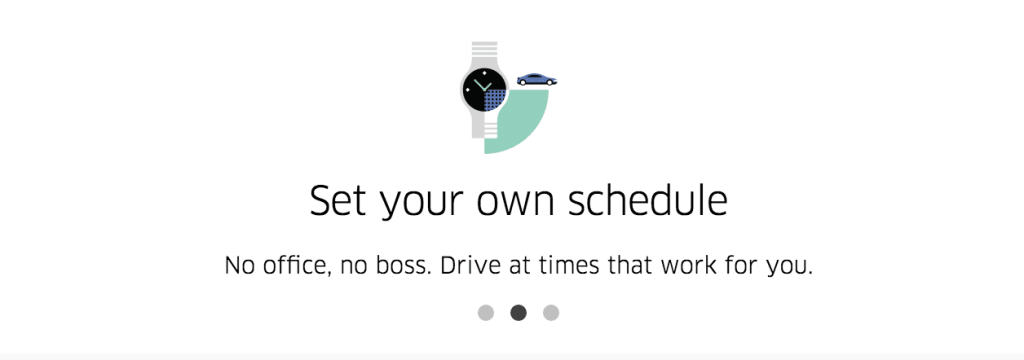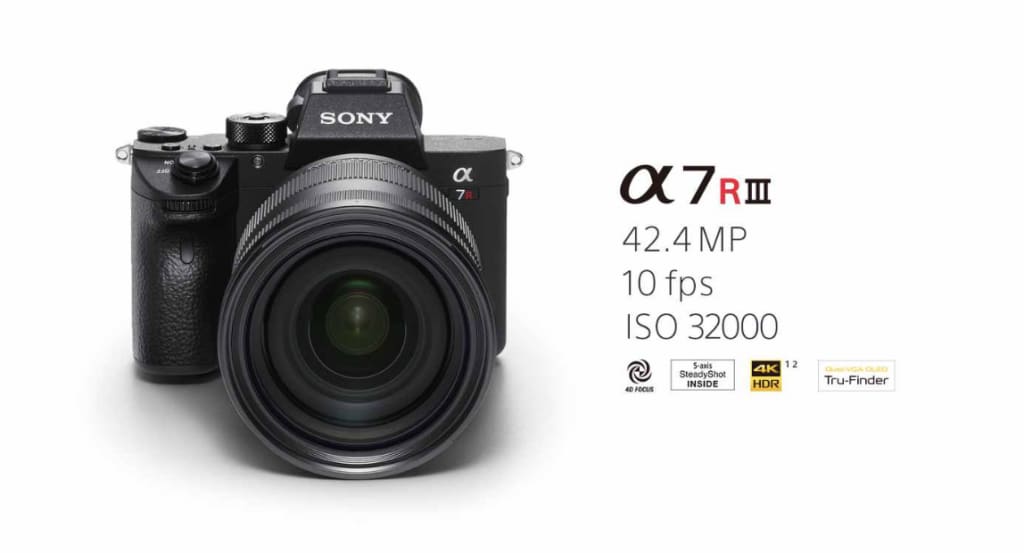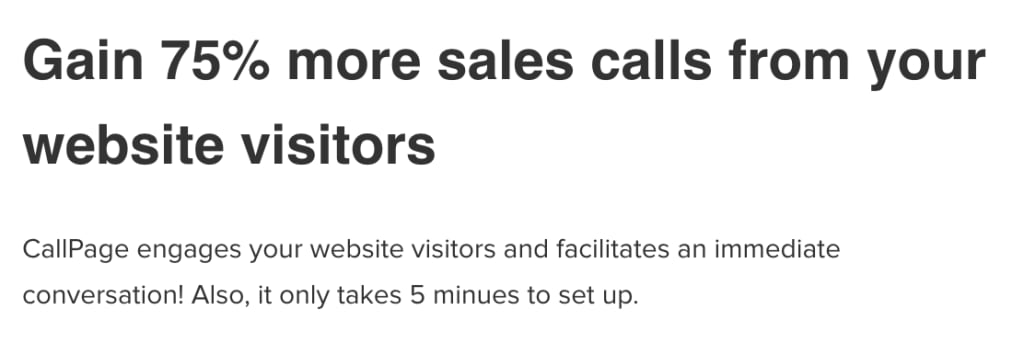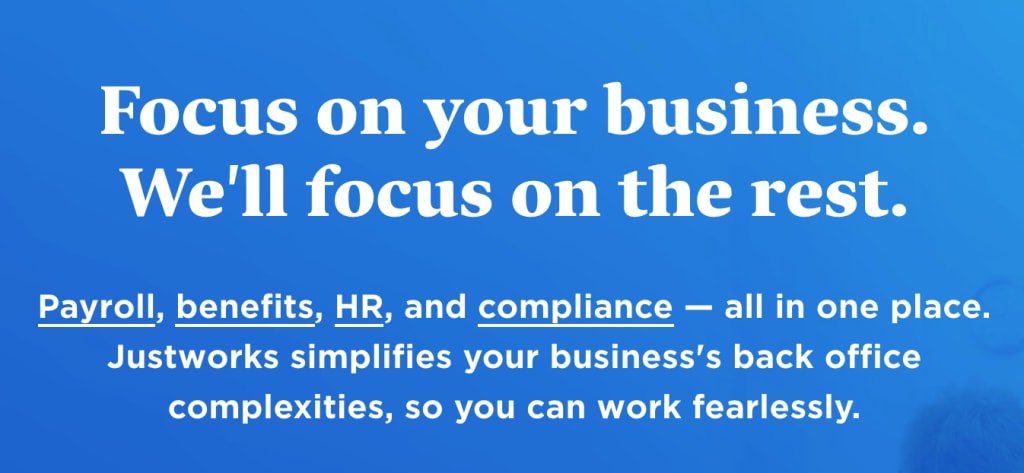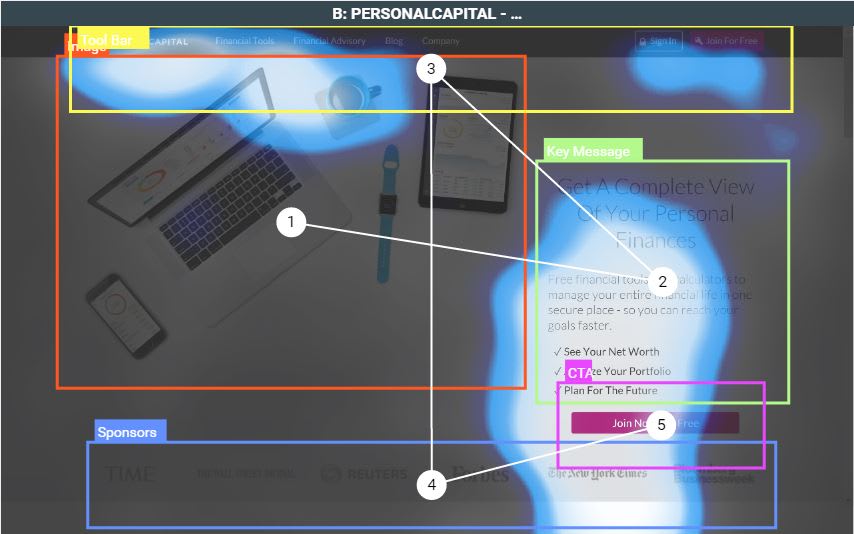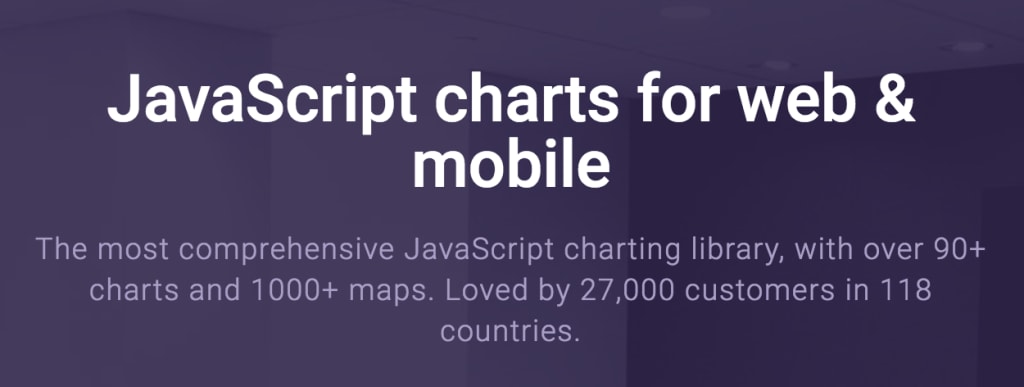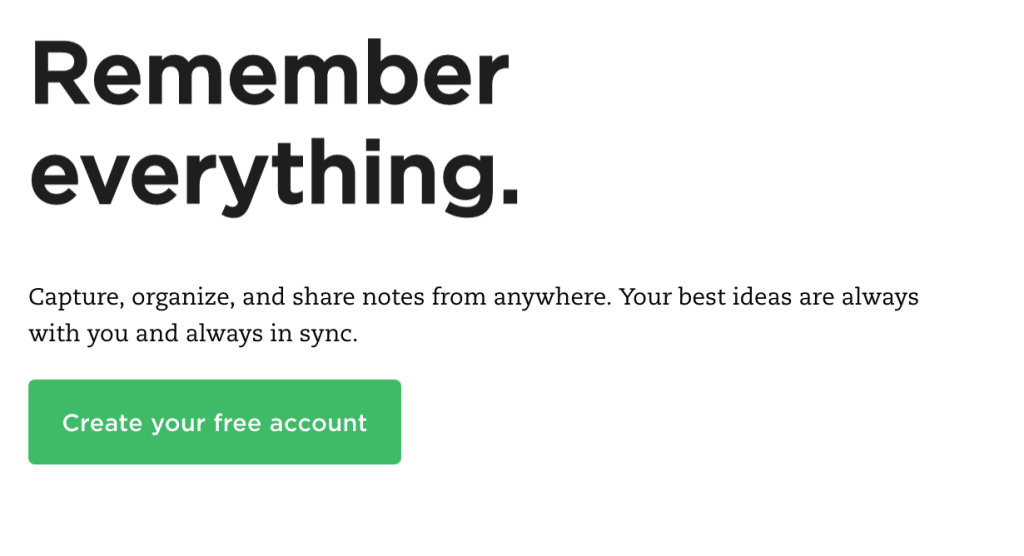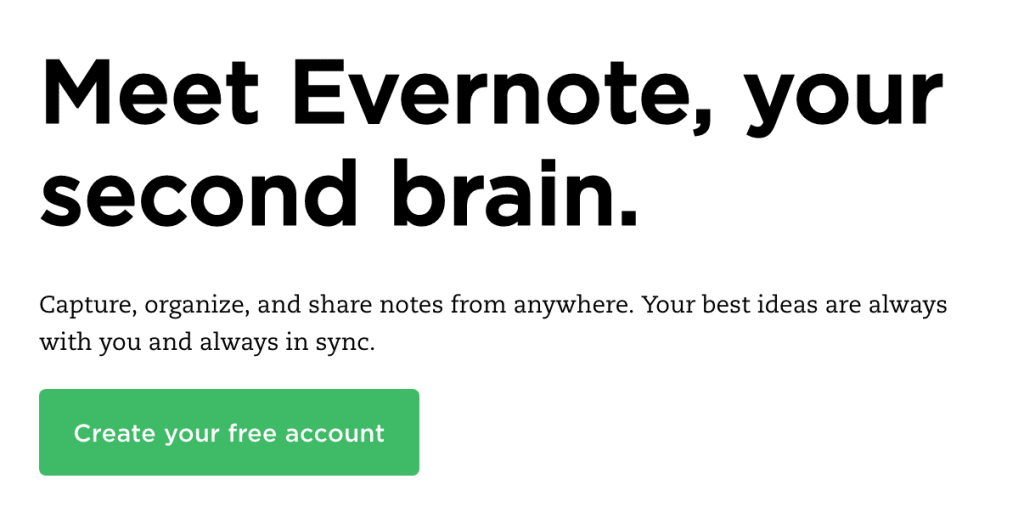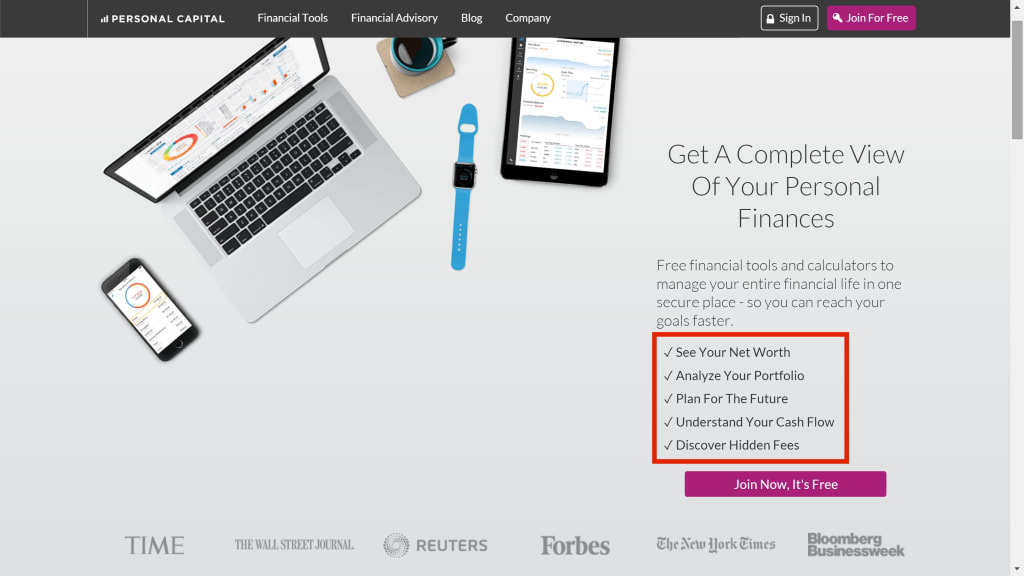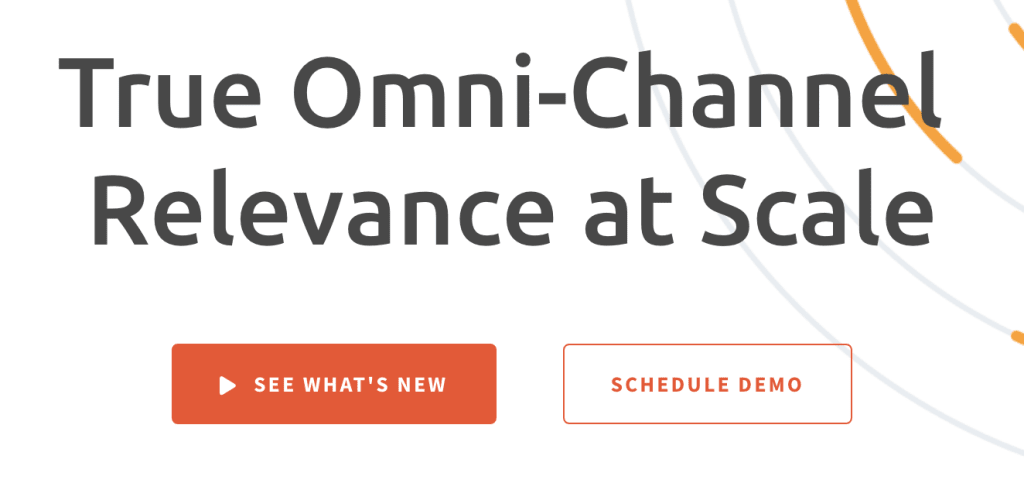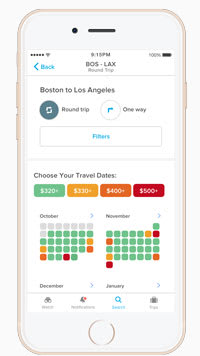Value propositions are one of the most important elements on web pages and ads. Capturing people’s interest and getting them to find out more about what you’re offering all comes down to how successful your value propositions are.
Fail with your value propositions and people probably won’t even notice your ads. They’ll hit the back button before making it beyond the fold of your most important pages. And they’ll have zero incentive to read through copy explaining a concept you failed to excite them about the first time around.
In short, creating killer value propositions is top of your priorities for every ad and most pages on your website.
What is a value proposition?
A value proposition is a concise and compelling description of the core benefit people get from doing business with you. In the case of your brand, it’s the unique value you have to offer that people won’t get from elsewhere. In the case of your products or services, it’s the problem they solve or the positive impact they have on people lives.
ActiveCampaign positions itself as the first marketing automation platform that’s both powerful and easy-to-use. There are plenty of powerful, complex automation tools out there. There are plenty of tools that fall short of marketers’ needs.
AutoCampaign sets itself up as the perfect compromise and, by using the word “finally”, implies that markers have been screaming out for a tool like this until now.
Airbnb’s value proposition is so strong it hasn’t really changed in its decade-long lifetime. The entire premise is unique travel experiences and getting beyond the typical tourist attractions.
Google doesn’t waste time talking about how much storage space users get with Google Drive or even which apps the suite comes with. It pinpoints the value proposition of providing a single, safe place for all of your files.
Uber uses a trio of value propositions to get new drivers signing up, including the “set your own schedule” plug. The idea of having no office, no boss and the freedom to choose when you work is a pretty compelling reason to become an Uber driver.
Now, from the examples we’ve looked at so far, you can see the best value propositions connect with people on an emotional level. The promise of unique travel experiences, occupational freedom and online security aren’t brand images or features. These the ways using a product or service will transform your life, career or something else important.
A value proposition isn’t a slogan
A slogan is designed to encapsulate your entire brand image in no more than a few words. Whereas a value proposition isn’t really about your brand at all. It’s about what your product, service or other offer can do for your target audience.
It isn’t a positioning statement either
A positioning statement defines what your brand does, who for and why you do it better than your competitors. Positioning statements are specific, tailored to your target audience – and, once again, more about your brand than the end user.
Value propositions are broader concepts and 100% about what your customers.
Features and specs aren’t value propositions
The main selling point of Sony’s full-frame mirrorless cameras is a whopping 42.4MP 35″ sensor crammed into a small, light body. However, these are features and specs, not value propositions. The value proposition of Sony’s mirrorless range is having the latest technology on your side so you never miss out of a shot.
What makes a great value proposition?
Okay, so we’ve looked at what a value proposition is and what one isn’t. However, the art of crafting an effective proposition that grabs people’s attention and primes them to take action is something else altogether. So let’s run through the key attributes of a great value proposition.
It must be… valuable
There’s a clue in the name with this first one. Skip on the value part with your value propositions and you’re going to misfire. Assume every visitor who lands on your page is asking themselves “what’s in it for me?”
Tell people what they get out of doing business with you and make it sound exciting. The guys at InVision know how frustrating it can be for design teams to collaborate on projects. More specifically, they know collaboration can be slow, cumbersome and difficult to manage. Its value proposition revolves solving these issues for design teams and managers.
Capture the main benefit
This one can tricky if you have a complex product or service. The challenge is to capture a single core benefit that makes your offer stand out from the way people currently do things.
DataDog makes this perfectly clear in the value proposition on its homepage. In an industry where marketers are surrounded by data from various sources, DataDog allows them to “see inside any stack, any app, at any scale anywhere.”
It’s a value proposition that perfectly describes the main reason people use DataDog in a single sentence.
Make it clear
When your value proposition is trying to capture a broad concept it can be hard to keep things clear and concise. If you fail to do this, though, you’ll lose all the potency you need to capture people’s attention.
If you’re struggling to do this, create a value proposition in the style of a call-to-action. Literally tell users what they’ll be doing by as soon as they take action on your offer, in the same way you would with a good CTA.
Make your product stand out
As with all marketing messages, your value proposition needs to make your product, service or brand stand out among the competition. Doing this convincingly is no easy task but Stripe takes the classic approach of making its platform sound innovative.
This is a solid tactic for tech firms, digital agency and any product or service that aims to innovate. The only thing is you need to back up your ambitious statement by living up to the promise.
Solve an ongoing problem
Nothing is more valuable than solving a problem that’s been burning away at your target audience for a long period of time. No matter what you’re selling, if you can make people confident your product or service will change their lives, you’ve got yourself a killer value proposition.
If customer training is difficult, make it easy – as Skilljar promises. If your target audience is wasting money, put an end to it. Hopefully, they’ll be well aware of their ongoing problem and promising a solution will be enough to capture their attention. If it isn’t, make the problem clear to them and then position yourself as the brand to solve it for them.
How to create a killer value proposition
After looking at what makes a great value proposition, we know what we should be aiming for. But how do you actually go about creating a killer value proposition in practical terms? Here’s a quick rundown of the key stages that’ll help you put together compelling value propositions every time around.
Step 1: Know what you’re promoting
A value proposition for your homepage will very different to one on a product page. Likewise, the launch of a new sales promotion is a world away from the value proposition you’ll aim for in an advertisement.
This is important because trying to capture your entire brand in a single value proposition is a completely different challenge to doing the same thing for a single product. Throughout the process of creating a value proposition, constantly remind yourself what it is you’re actually promoting. As soon as you deviate away from this, you’re in trouble.
Step 2: List the key benefits of your offer
Once you’ve clarified precisely what you’re promoting with your value proposition, it’s time to list the key benefits of your offer. As I told you earlier, a value proposition needs to capture the broadest, most important benefit of your offer. What we’re doing here is working in reverse by listing all of the benefits and refining the list until we arrive at a single, core benefit.
Step 3: List user problems associated with your offer
In the same way you’ve just listed the key benefits of your offer, it’s now time to lists the problems your target audience experiences, related to your offer. Once again, it’s important you keep your offer in mind (e.g.: homepage vs product pages) because the problems you’re addressing will vary.
Once you have your list of user problems, put them in order of importance. Then go back to your key benefits and circle every benefit that’s relevant to the most important user problem on your list.
Finally, mark the benefits related to your second and third most pressing user problem as well, because you might need them later on.
Step 4: Condense your list of benefits into value propositions
Now that you’ve got a short list of benefits related to your audience’s most pressing problem, it’s time to condense them into value propositions. You may find all of your benefits combine nicely into a single value proposition.
Or you may have to come up with a number of value propositions highlighting each benefit and see which one makes the most compelling offer. Either way, you should end up with a range of value propositions and variations to work with.
Step 5: Test your value propositions
One of the biggest mistakes marketers make with value propositions is not testing variations. As a minimum, test your propositions with small user groups to choose which one you set as your sample and A/B test the other variations.
The key is to test value propositions that are significantly different from each other, not simple variations that change a single word. Test propositions that focus on different user problems or key benefits to make sure you’re on the right track.
How to design a killer value proposition
Much like creating a great call to action, you don’t simply write a killer value proposition. You design one. So, in this next section, we’re going to look at the visual elements that make a great value proposition.
Above the fold is pretty important
It’s generally accepted that calls to action don’t always need to be above the fold these days. However, I would argue value propositions almost always want to be in the first view user has of any given page or advertisement. If you value proposition isn’t the first thing grabbing user attention, then what is?
Probably something that shouldn’t be.
Think about placement above the fold
Let me be clear: I’m not saying you should always put your value propositions above the fold (there are no rules) but it will be the best place for it in 99% of situations.
Either way, you also want to think about placement within the hero section (above the fold) or wherever else you put your value proposition.
For some interesting insights into value proposition placement, you can take a look at this study from ConversionXL. However, the key thing is to put plenty of whitespace around your proposition and make it the standout feature of your content above the fold.
Make it stand out visually
Aside from using whitespace to your advantage, you’ll want to make the most of font choices and styles. Find the right balance between bold and regular text, especially if you have a heading and subheading design (always a good place to start).
Colour contrast is also important. In the FusionCharts example above there’s strong contrast between the white text and the purple background. There’s also contrast between the bold and regular weighted text and colour contrast between the white and the purple shade of the subheading. There’s also a good touch of size contrast, which is important here.
The only criticism here is that the light purple text of the subheading against a purple background could be difficult to read in bright light situations. This can be a common problem for mobile users browsing in daylight.
Avoid visual clutter
The example above is an old design and a little extreme by modern standards, but it illustrates the point well. Avoid visual clutter when it comes to value proposition design. This starts with an uncluttered design surrounding your proposition but also pay attention to any images you use to reinforce your message.
While the overall page design in the example above is cluttered, notice how the value proposition itself it snuggly tucked away in the white background of a duvet. The image couldn’t be more relevant to the core message of this proposition and the text is wisely placed.
Make the message your priority
Evernote ditches the images altogether on its homepage, choosing to let the text say everything it needs to. To keep things concise, it uses a simple animation effect to slide four different pieces of headline text into a placeholder. This gives space for a longer proposition message without taking up any physical room on the page.
A longer value proposition might be ok
In general, I always recommend to aim for the most concise value proposition you can. The headline and subheading format is a great approach to this because it really forces you to condense your proposition into something short and punchy.
That said, don’t feel you can’t go for a longer value proposition when necessary. The best value propositions are no longer than they need to be. But, sometimes you simply have to go for more to get the right message across.
Going back to the ConversionXL study we looked at earlier, some value propositions work more effectively when more information is given.
The problem is your design project becomes more challenging with longer value propositions. Bullet points can be a good way to visually break up your key points and some brands even go for a slider design.
Just be careful your value proposition doesn’t turn into a list of benefits on the wrong part of your page.
Additional value proposition examples
By this stage, you should be in a good position to create value propositions that grab people’s attention and inspire them to take action. To put the points we’ve covered in greater context, though, let’s look at some more great examples of value propositions that make things happen.
Leadformly
Leadformly integrates a value proposition into the first call-to-action you’ll see on its homepage – a good approach to creating powerful CTAs in the hero section of your pages.
Infusionsoft
Infusionsoft doesn’t claim to be doing anything revolutionary. Instead, it focuses on making everyday life easier for businesses and sales team, promising to make customers happier by improving efficiency.
It’s a concise value proposition and it sticks to all the design fundamentals we’ve covered in this article. Simple. Effective.
Iterable
Iterable has made a conscious decision to use industry jargon in the value proposition for its homepage. This can be a risky move unless your target audience is highly focused on people who understand the language you’re using.
In this case, it works and it works well. Jargon can be okay if your aim is to solve technical issues for tech people, but use it with care.
Algolia
Algolia nails the visual value proposition approach. The platform allows online businesses to easily integrate search into their sites and a search bar dominates the hero section of its homepage. Algolia uses animation to type out its value proposition out in front of users’ eyes. It’s no design gimmick either, as it perfectly illustrates the purpose of signing up to the platform.
GoCompare
GoCompare allows users to compare prices on all kinds of purchases, from insurance to broadband and energy plans. However, the brand chooses to focus on the service of comparing car insurance in its main value proposition, consistent with the majority of its advertising campaigns.
Don’t be afraid to focus on your most attractive offer for your homepage and other places where multiple products or services are being promoted.
Ancestry.com
Ancestry.com‘s entire marketing strategy revolves around the notion of making people feel special about themselves. In a world full of Instagram pics and Facebook statuses, we’ve never been more narcissistic and Ancestry.com plays on this desire to feel special perfectly.
Episode Time
Another side-effect of modern times is the fear of missing out on something others are enjoying. On-demand and streaming services use this to full effect and you can even see this compulsion used in the value proposition for Episode Time – an app that simply tells users when their favourite shows are on.
When time is precious, we’re not always in a position to read all of the content that catches our eye. Pocket offers the simple ability to save any page for later, view it from any device and even convert it for offline viewing so you’ve got something to read when internet access lets you down.
Hopper
Hopper lets you type in your travel plans and get alerts when the best flights crop up. Essentially, it’s an ongoing automated price comparison tool but the value proposition is getting the cheapest fares without constantly having to search yourself.
Everything starts with your value proposition
Crafting a killer value proposition is about much more than writing a bit of sales copy. This is the entire premise of why people should buy into your offer and making this clear from the moment visitors land on your page is essential.
If this is the value proposition of your entire brand then hopefully you know what it is that sets you apart. For new product releases, service, events and sales promotions, aim to capture what makes this launch so exciting to the end user.
Tell users what they get out of this and make your value propositions so compelling people can’t help themselves scrolling further down the page.




